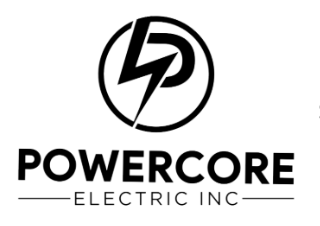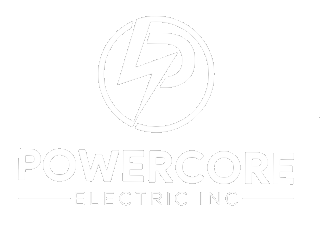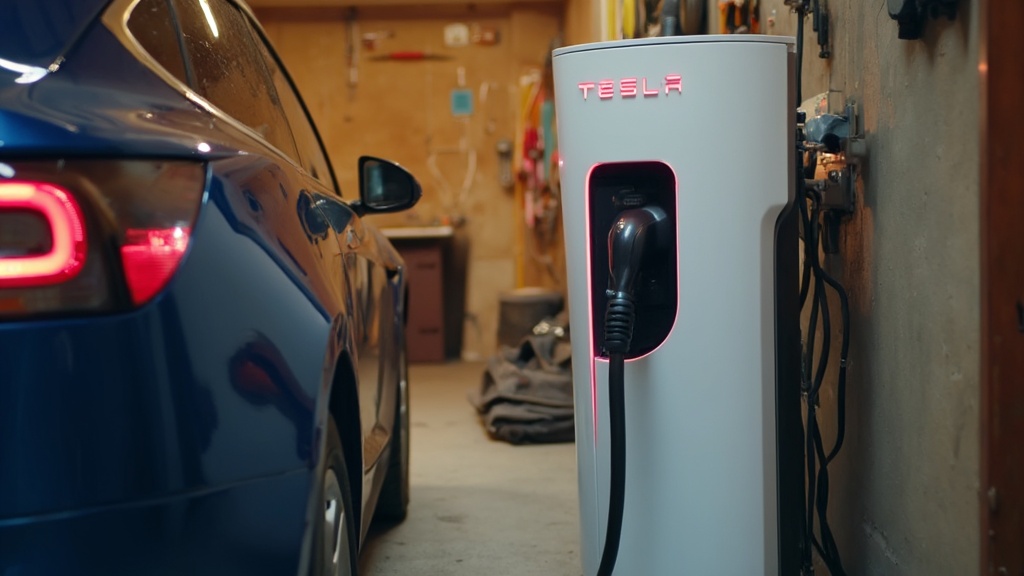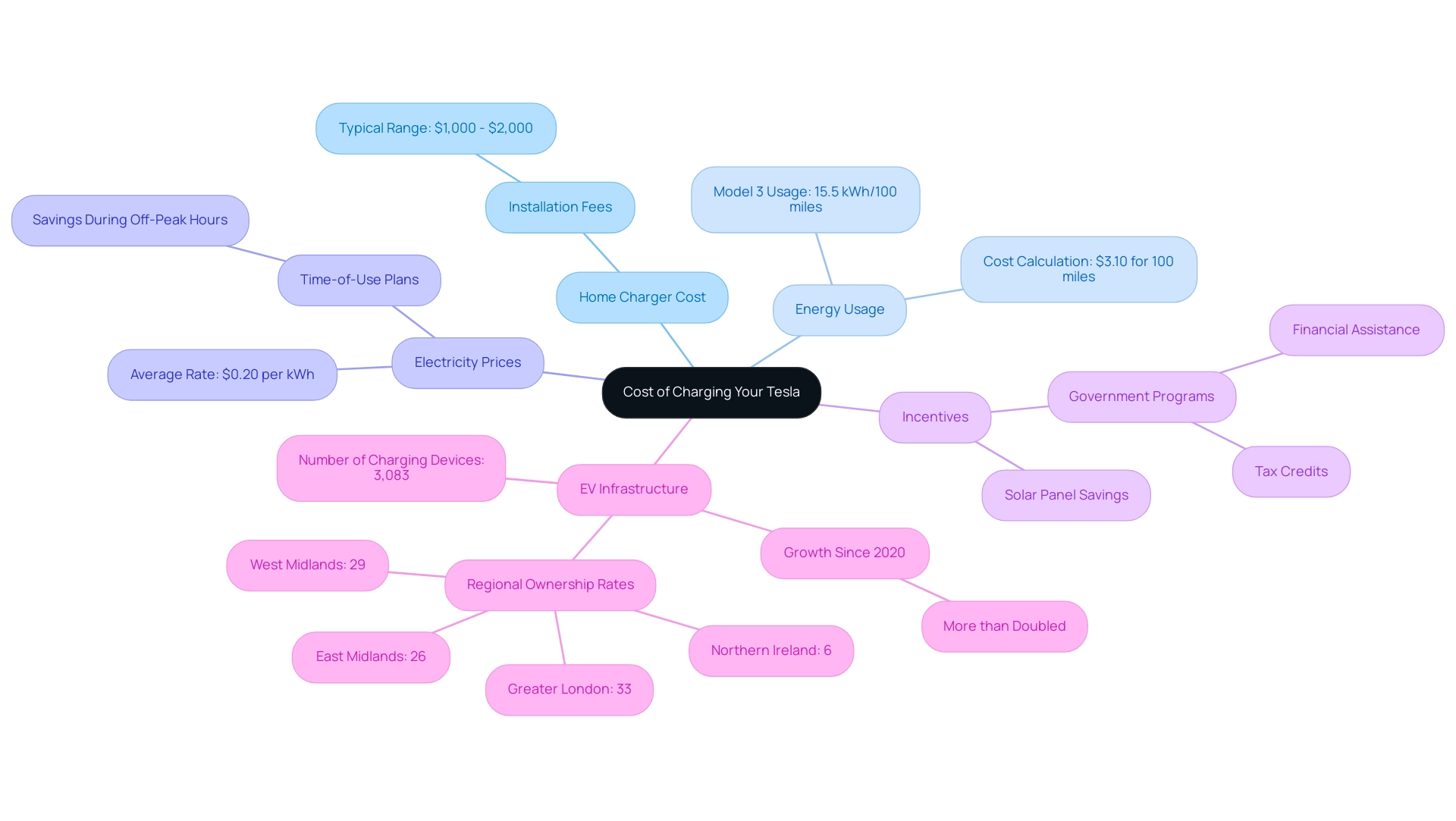Introduction
Navigating the world of electric vehicle ownership can feel overwhelming, especially when it comes to understanding the costs associated with charging a Tesla at home. With the rise of electric vehicles, many homeowners are eager to make the switch but may be unsure about what to expect in terms of expenses.
From the energy consumption of different Tesla models to the installation costs of home chargers, there are several factors to consider. This article aims to demystify the financial aspects of charging a Tesla, explore various home charging options, and highlight available incentives that can make the transition not only eco-friendly but also budget-friendly.
By the end, homeowners will have a clearer picture of how to make informed decisions that suit their driving habits and financial goals.
Understanding the Cost of Charging Your Tesla
When evaluating the expenses related to powering your Tesla, it is crucial to consider how much does a home Tesla charger cost, along with the energy usage of your particular model and the installation fees. For instance, the Tesla Model 3 typically uses about 15.5 kWh to travel 100 miles. To estimate your daily energy needs, multiply this figure by the distance you expect to drive.
Furthermore, local electricity prices can greatly influence expenses for replenishing energy; for instance, if your rate is $0.20 per kWh, powering your Model 3 for 100 miles would amount to roughly $3.10. It’s important to note that charging expenses can vary based on the time of day, especially if you are on a time-of-use plan, which can help you save money when charging during off-peak hours. Furthermore, when considering how much does a home Tesla charger cost, the installation generally ranges from $1,000 to $2,000, depending on the specifics of your home’s electrical system.
Homeowners may also benefit from government programs that offer incentives for installing solar panels, which can further reduce energy costs. These programs can provide financial assistance or tax credits, making the transition to electric vehicles more affordable. Additionally, as the number of slow EV power devices in the UK has more than doubled since 2020, there is a growing infrastructure supporting electric vehicle usage.
Currently, there are 3,083 power supply devices available, reflecting the increasing trend in electric car ownership. By considering these factors, you can better predict your monthly expenses for electricity and manage your budget effectively.
Exploring Home Charging Options: Level 1 vs. Level 2 Chargers
When investigating home power options for your Tesla, you’ll mainly come across two varieties: Level 1 and Level 2 devices. Level 1 devices are the most accessible, using a standard 120-volt outlet. However, they charge your vehicle at a slower pace, typically adding about 3 to 5 miles of range per hour, with an average efficiency of 80%.
This can function effectively for those who drive less often and prefer an overnight power solution. On the other hand, Level 2 devices function on a 240-volt outlet and offer a significantly quicker power-up experience, providing 15 to 30 miles of range each hour. This makes them an excellent choice for regular drivers who need a quick top-up.
While the initial installation expenses for Level 2 chargers may be higher, often ranging from $500 to $2,000 depending on installation specifics, many consumers consider how much does a home tesla charger cost, yet the significant reduction in power-up time often makes it a worthwhile investment. As highlighted in a study by Apostolaki-Iosifidou, higher efficiency levels—exceeding 90% for Level 2 devices—underscore the advantages of these more robust power solutions. It’s also important to consider that power efficiency can be affected by temperature, dropping significantly in extreme cold, which is a critical factor for eco-conscious homeowners.
Research from the case study titled ‘Efficiency Studies on Level 1 and Level 2 Charging’ emphasizes the advantages of using higher voltage and current for improved charging efficiency in electric vehicles. Moreover, several governmental initiatives may provide benefits for setting up these devices, further lowering expenses. Understanding these differences, along with insights into solar panel functionality, available cleaning services, and battery storage solutions, can help you make an informed decision that aligns with your driving habits and environmental goals.
Calculating Installation Costs for Your Tesla Charger
When considering [[[[[[[[[[[[[[[[[[[[how much does [a home tesla charger cost](https://gopowercoreinc.com/category/general/page/24)](https://gopowercoreinc.com/general/how-to-determine-how-much-to-install-a-tesla-charger-at-home-a-step-by-step-guide/)](https://gopowercoreinc.com/general/how-to-determine-how-much-to-install-a-tesla-charger-at-home-a-step-by-step-guide/)](https://gopowercoreinc.com/general/how-to-determine-how-much-to-install-a-tesla-charger-at-home-a-step-by-step-guide/)](https://gopowercoreinc.com/general/how-to-determine-how-much-to-install-a-tesla-charger-at-home-a-step-by-step-guide/)](https://gopowercoreinc.com/general/how-to-determine-how-much-to-install-a-tesla-charger-at-home-a-step-by-step-guide/)](https://gopowercoreinc.com/general/how-to-determine-how-much-to-install-a-tesla-charger-at-home-a-step-by-step-guide/)](https://gopowercoreinc.com/general/how-to-determine-how-much-to-install-a-tesla-charger-at-home-a-step-by-step-guide/)](https://gopowercoreinc.com/general/how-to-determine-how-much-to-install-a-tesla-charger-at-home-a-step-by-step-guide/)](https://gopowercoreinc.com/general/how-to-determine-how-much-to-install-a-tesla-charger-at-home-a-step-by-step-guide/)](https://gopowercoreinc.com/general/how-to-determine-how-much-to-install-a-tesla-charger-at-home-a-step-by-step-guide/)](https://gopowercoreinc.com/general/how-to-determine-how-much-to-install-a-tesla-charger-at-home-a-step-by-step-guide/)](https://gopowercoreinc.com/general/how-to-determine-how-much-to-install-a-tesla-charger-at-home-a-step-by-step-guide/)](https://gopowercoreinc.com/general/how-to-determine-how-much-to-install-a-tesla-charger-at-home-a-step-by-step-guide/)](https://gopowercoreinc.com/general/how-to-determine-how-much-to-install-a-tesla-charger-at-home-a-step-by-step-guide/)](https://gopowercoreinc.com/general/how-to-determine-how-much-to-install-a-tesla-charger-at-home-a-step-by-step-guide/)](https://gopowercoreinc.com/general/how-to-determine-how-much-to-install-a-tesla-charger-at-home-a-step-by-step-guide/)](https://gopowercoreinc.com/general/how-to-determine-how-much-to-install-a-tesla-charger-at-home-a-step-by-step-guide/)](https://gopowercoreinc.com/general/how-to-determine-how-much-to-install-a-tesla-charger-at-home-a-step-by-step-guide/)](https://gopowercoreinc.com/general/how-to-determine-how-much-to-install-a-tesla-charger-at-home-a-step-by-step-guide/)](https://gopowercoreinc.com/general/how-to-determine-how-much-to-install-a-tesla-charger-at-home-a-step-by-step-guide/), several significant factors are involved in determining the installation expenses for your Tesla device. Initially, the kind of power supply you select greatly affects the total expense. Level 1 units may not involve installation expenses if you already possess a suitable outlet, while Level 2 units generally have installation fees ranging from $300 to $1,500, depending on how much does a home tesla charger cost based on your residence’s electrical system details.
Key financial factors include:
- How much does a home tesla charger cost
- The power of the device
- Whether a pedestal is required
- The unit’s networking features for communication or payment processing
If your setup requires an electrical panel upgrade or new wiring, it’s important to consider how much does a home tesla charger cost, as those expenses can accumulate as well. To get a more accurate estimate tailored to your home’s needs, it’s always prudent to seek quotes from licensed electricians, like those at Powercore Electric Inc., who specialize in EV charger installations and general electrical services.
Additionally, checking with your local utility company about potential rebates for installing EV chargers can be beneficial.
These rebates can greatly assist in reducing expenses, making your shift to eco-friendly power sources more economical. As one homeowner from Michigan shared, ‘I pay $30/mo for unlimited non-prime time charging,’ illustrating how strategic charging can lead to long-term savings. Another homeowner, HellsKitchen, mentioned, ‘I lucked into a pilot utility rate plan but had to pay extra for a meter box installation.
That was in 2017, so I’ve had five years to assist with the installation expenses. This highlights the importance of considering utility plans when planning your installation. Keep in mind, investing in the appropriate arrangement now—whether it’s a Tesla power source or solar panels from Powercore Electric—can result in both convenience and savings in the future!
Incentives and Savings: Making Home Charging More Affordable
Installing an EV charging station at your residence can be a wise investment, particularly when you consider how much does a home tesla charger cost and the numerous state incentives accessible to assist you in offsetting the expenses. Many states offer enticing programs, including tax credits, rebates, and grants that can significantly reduce your upfront expenses. For example, California has excellent rebate programs specifically for home refueling equipment.
In Wyoming, Black Hills Energy offers up to $500 for customers who purchase and install a qualified Level 2 EV charger, while Dakota Electric Association provides similar rebates of up to $500 for installing a Level 2 charger, leading to substantial savings. Plus, utility companies often provide special rates for powering your electric vehicle during off-peak hours, further trimming down your electricity bills. A practical example can be observed with Xcel Energy, which offers installation and maintenance of a Level 2 power station for customers enrolled in their time-of-use electricity rate, facilitating convenient solutions for electric vehicle owners.
Charging at your residence is not only straightforward but also allows you to save time and money, which makes one wonder how much does a home tesla charger cost. To navigate this landscape of incentives, remember to check out the Database of State Incentives for Renewables & Efficiency (DSIRE), a valuable resource for uncovering what’s available in your area. As Ruth Celestin wisely advises, ‘Additionally, program details and requirements may change over time, so it’s advisable to verify the current status of any incentives directly through official channels or relevant organizations.’
By utilizing these rebates and programs, you can make residential refueling not only an eco-friendly choice but also a financially wise one! If you’re contemplating the installation, don’t hesitate to contact Powercore Electric Inc. at ryan.serrano@powercoreinc.net or call T: (916) 699-8778 for expert services in EV supply stations, solar panels, and battery backup solutions.
Home Charging vs. Public Charging: A Cost Comparison
When evaluating the alternatives between residential power supply and public power access, it’s crucial to consider how much does a home Tesla charger cost in terms of both convenience and expenses. Charging your Tesla at home typically proves to be more economical than depending on public charging stations, particularly when you consider how much does a home Tesla charger cost and the ability to utilize off-peak electricity rates. For instance, a complete charge at your residence might cost you approximately $3.10, while public stations generally charge between $0.25 and $0.50 per kWh.
These costs can accumulate quickly, especially for frequent drivers. Furthermore, when assessing how much does a home Tesla charger cost, it’s important to note that public power stations frequently include extra costs, while residential electricity supply offers you greater control over your expenses. Considering that the typical American travels roughly 36 miles each day, it’s not unexpected that 80% of EV users favor the ease of at-home power supply.
Utilizing a trusted installation service like Powercore Electric can further enhance the accessibility and convenience of EV ownership. Powercore provides extensive services such as solar panel installations and battery backups, ensuring that your residential power setup is efficient and sustainable. In areas such as Hawaii, where gasoline prices are elevated, the expense of recharging—though somewhat pricier—can still demonstrate affordability when compared to conventional fuel, emphasizing the economic advantages of personal recharging.
One pleased client remarked, ‘Since installing my residential charger with Powercore Electric, I’ve saved significantly on my energy costs and appreciate the convenience of recharging at my residence.’ Ultimately, for regular Tesla drivers, knowing how much does a home Tesla charger cost translates into significant savings and unmatched convenience. Ready to make the switch to electric vehicles?
Contact Powercore Electric today to learn more about our EV charging solutions and how we can help you embrace a cleaner, more sustainable future.
Conclusion
Understanding the costs associated with charging a Tesla at home is crucial for homeowners considering the switch to electric vehicles. By taking into account the energy consumption of different models, the installation costs of chargers, and the potential savings from government incentives, a clearer financial picture emerges. Whether opting for a Level 1 or Level 2 charger, knowing the trade-offs in charging speed and efficiency helps in making an informed decision that aligns with individual driving habits.
Home charging not only proves to be more economical than public charging but also offers convenience and control over expenses. By utilizing off-peak electricity rates and exploring available rebates, homeowners can significantly reduce their overall costs while enjoying the benefits of electric vehicle ownership. Additionally, the growing infrastructure for electric vehicles further supports this transition, making it easier than ever to embrace a more sustainable lifestyle.
In conclusion, investing in a home charging solution for a Tesla is not just an eco-friendly choice; it’s a financially savvy one as well. With the right information and resources, homeowners can confidently navigate the world of electric vehicle ownership, ensuring that their transition is smooth, cost-effective, and beneficial for both their wallets and the environment. Embracing this change paves the way for a cleaner, more sustainable future.



